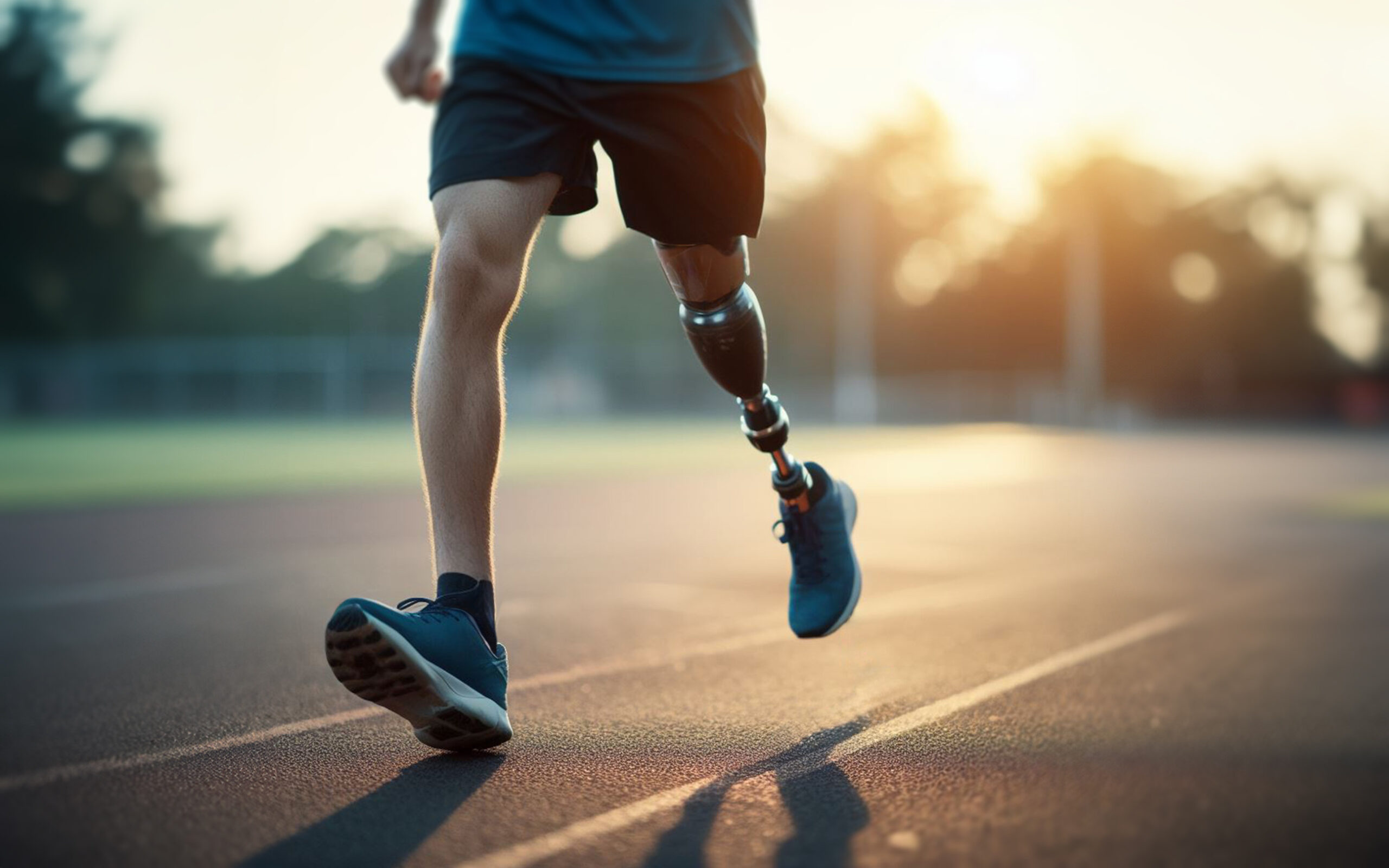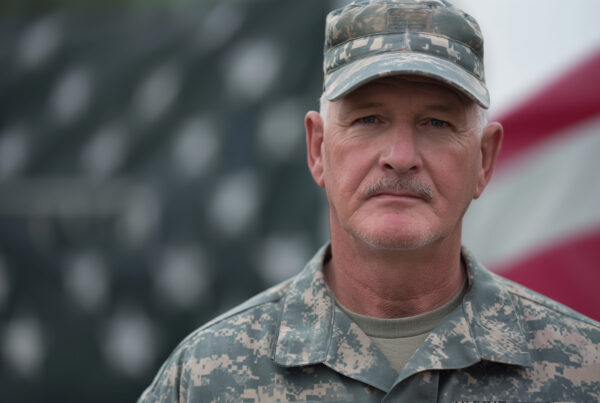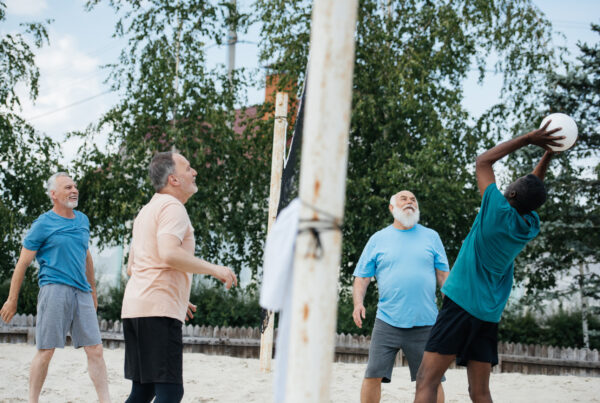”Question: What support do Veterans and other community members with amputations need?
Reading time: 5 Minutes
MWi Hack:
- National Limb Loss Awareness Month highlights the 2.7 million Americans living with limb loss, including 1.8 million Veterans, and emphasizes how comprehensive support networks, adaptive exercise, and military-inspired mental strategies enable Veterans to successfully navigate their recovery journey and embrace their new circumstances.
MWi Summary:
- National Limb Loss Awareness Month recognizes 2.7 million Americans with limb loss, including 1.8 million Veterans who receive care through the VA system.
- Veterans with limb loss require interconnected support networks including medical teams, peer mentors, family caregivers, and continued military community connections.
- Adaptive physical exercise serves as medicine for Veterans with limb loss, with options ranging from fundamental balance training to specialized adaptive sports programs.
- Mental resilience strategies that leverage military mindset help Veterans reframe their circumstances, maintain connections, recognize post-traumatic growth, and apply mindfulness techniques.
- Veterans find motivation through mentoring others, setting progressive challenges, maintaining team accountability, and celebrating recovery milestones.
April marks National Limb Loss and Limb Difference Awareness Month, a crucial time to recognize the challenges faced by the 2.7 million Americans living with limb loss, including approximately 1.8 million Veterans within the VA health care network. For our military community, limb loss represents not just a physical change but a profound life transition that demands both personal resilience and community support.
The Veteran Experience with Limb Loss
Military personnel face unique risks of traumatic limb loss through combat injuries, training accidents, and service-related incidents. Veterans also experience higher rates of vascular disease, diabetes, and other conditions that can lead to medical amputations. The journey doesn’t end when service members return home – it transforms into a different kind of battle requiring equal parts determination and support.
The VA’s Amputation System of Care (ASoC) serves more than 45,000 Veterans with major limb loss, with the average age being 69 years. Combat Veterans with limb loss often report that their rehabilitation team becomes a critical support network, describing them as “motivating and supportive coaches” who promote self-confidence and self-advocacy.
Building the Support Network
Veterans thrive when surrounded by interconnected support systems:
Medical Teams: Prosthetists, physical therapists, and rehabilitation specialists provide the technical expertise needed for physical recovery. These professionals don’t just fit prosthetics – they rebuild confidence in mobility.
Peer Mentors: Fellow Veterans who have navigated limb loss offer unparalleled understanding. Organizations like the Amputee Coalition train Veteran volunteers to provide information and encouragement to those newly experiencing limb loss.
Family Caregivers: The 5.5 million caregivers for injured Veterans need recognition and support, too. These individuals often shoulder tremendous responsibility in the recovery process, providing daily assistance and emotional support.
Military Community: Unit cohesion doesn’t end at discharge. Fellow service members maintain the brotherhood and sisterhood that sustains morale during difficult transitions.
Movement as Medicine
Physical activity remains one of the most powerful tools for Veterans with limb loss to reclaim independence:
Start with Fundamentals: Begin with exercises that build prosthetic control. Weight shifting between legs, standing balance, and proper gait training create the foundation for more advanced movement.
Embrace Adaptive Sports: Many Veterans discover new passions through adaptive sports. Swimming, cycling, basketball, and even specialized military-style obstacle courses offer competitive outlets while building strength.
Leverage Military Mindset: Apply the discipline and determination from military training to rehabilitation. Set clear objectives, track progress, and celebrate achievements in physical recovery.
Find Veteran-Specific Programs: Organizations like Move United offer adaptive sports programs specifically designed for Veterans, often at little or no cost. These programs understand military culture and create environments where Veterans feel understood.
Mental Strength for the New Mission
The psychological journey after limb loss demands as much attention as physical rehabilitation:
Redefine Mission Parameters: Apply military strategic thinking to new circumstances. Veterans succeed when they view adaptation not as defeat but as a tactical adjustment to accomplish life objectives.
Maintain Unit Integrity: Combat isolation by actively connecting with other Veterans. Virtual and in-person support groups provide critical emotional resilience and practical advice.
Recognize Post-Traumatic Growth: Many Veterans report that overcoming limb loss leads to discovering unexpected strengths and perspectives. This isn’t minimizing trauma but acknowledging that challenge can forge new capabilities.
Deploy Mindfulness Techniques: Combat Veterans often benefit from mindfulness practices that address phantom limb pain and adjustment stress. The VA offers specific programs that respect military experience while teaching these skills.
Building a New Future
For Veterans with limb loss, motivation often comes from finding new ways to serve and connect:
Mentor Others: Many Veterans find purpose in helping others navigate similar challenges. Becoming a certified peer visitor creates meaningful impact while reinforcing personal progress.
Set Progressive Challenges: Military training emphasizes incremental skill building. Apply this approach to rehabilitation by creating a series of achievable goals that build toward larger objectives.
Maintain Team Accountability: Create or join accountability groups where members check in regularly on physical and mental health goals, providing the structure many Veterans find motivating.
Celebrate Victory: Acknowledge milestones in recovery as significant achievements. The discipline that gets Veterans through rehabilitation deserves recognition.
National Limb Loss Awareness Month reminds us that supporting Veterans with limb loss isn’t solely a medical responsibility but a community obligation. When we strengthen the networks around our Veterans, we honor not just their past service but their ongoing courage in facing new challenges.






